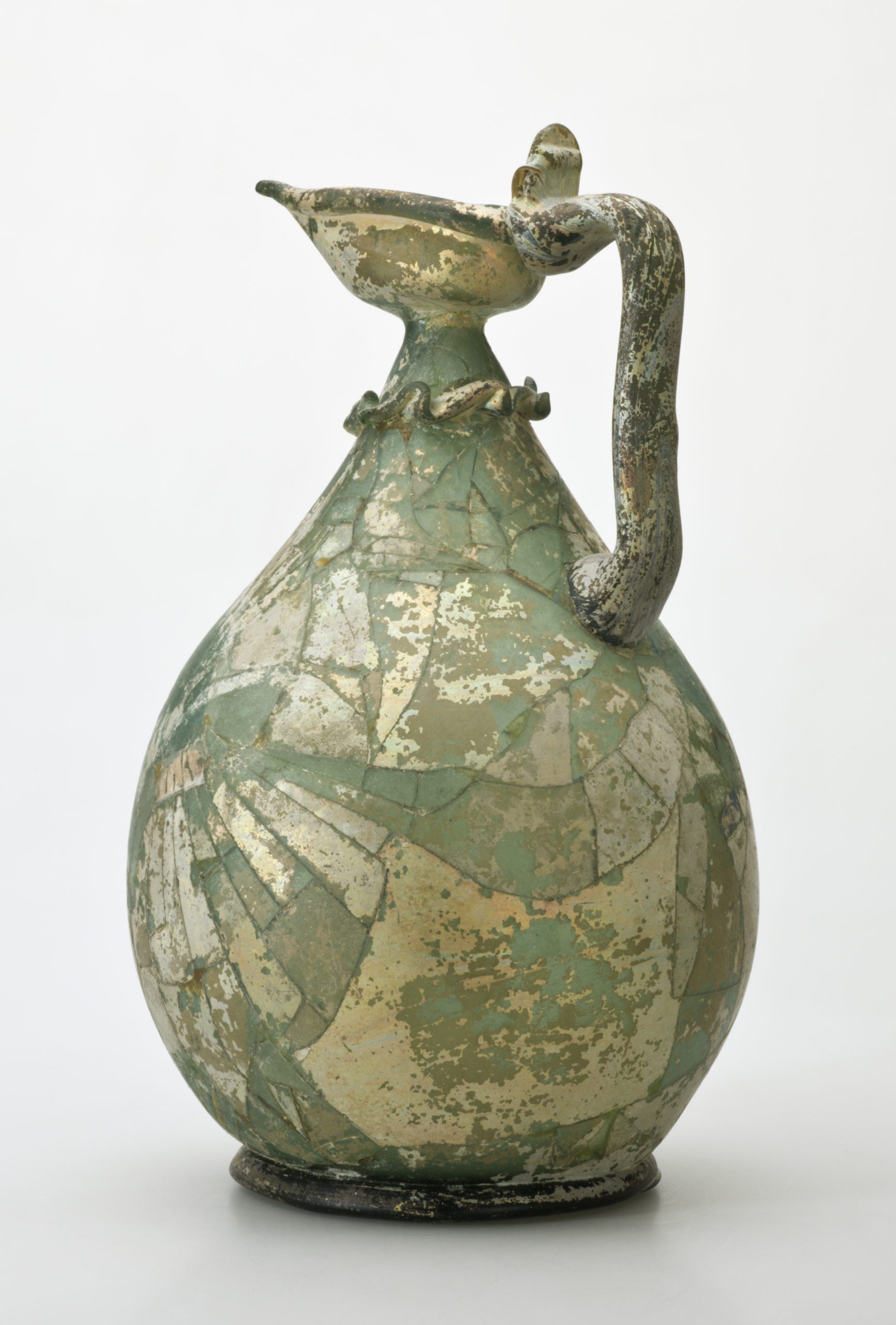 Print Page
Print Page
 Print Page
Print Page
Location: Iran or Egypt
Materials: yellowish-green glass; blown, trail-decorated and tooled
Dimensions: 34.5 x 20cm
Accession Number: GLS 275
Other Notes:
This is the largest specimen known so far of a popular Islamic glass form – the pear-shaped ewer with almond-shaped mouth. The shape can be traced back to Sasanian glass ewers, and the longevity of this Sasanian tradition is attested by Abbasid specimens that have been found at Samarra, in contexts generally dated to the 9th or 10th century; and by the cut-glass or rock-crystal ewers of the late 9th–11th centuries, of which perhaps the best known is the rock-crystal ewer inscribed in the name of the Fatimid caliph al-‘Aziz (r 365–386 AH/ 975–996 AD) in the treasury of San Marco in Venice. The form spread to the Byzantine world, as is shown by one complete and one fragmentary example from the Serçe Limani wreck.
The pyriform body of this ewer stands proudly undecorated, while its narrow neck has been festooned with an applied thick tread. It has a large pointed mouth with a thick rim that has been out-folded and tooled. The handle rises vertically from the shoulder, and bends sharply into the rim; the junction is marked by a thumb-piece, which on other pieces of this type is set further back. The solid pad base, which may have been coiled on the marver and then applied to the body, retains a conspicuous pontil mark.
Bibliography:
S.M. Goldstein et al, Glass. From Sasanian Antecedents to European Imitations, The Nasser D Khalili Collection of Islamic Art, volume XV, London 2005, cat.78, pp.80–81.
